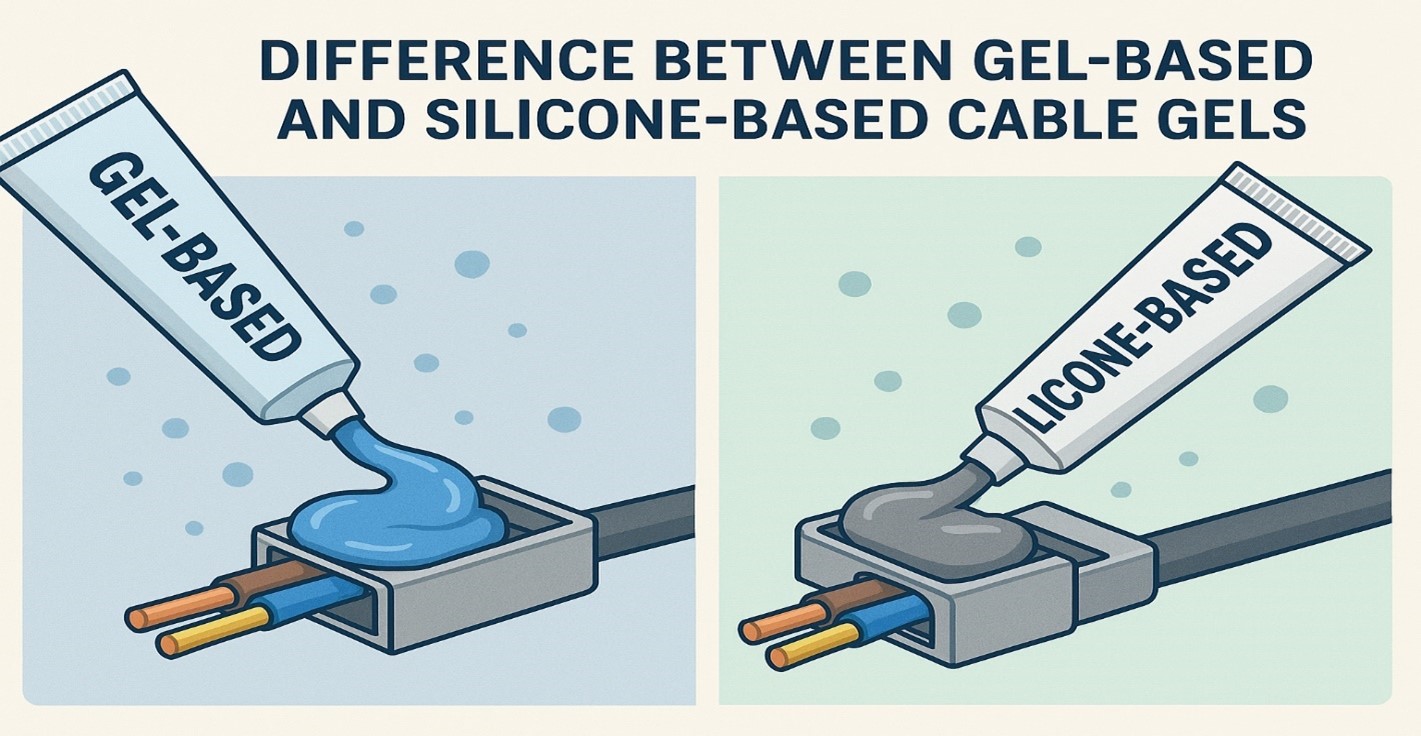Cable gels are essential in various telecommunication and electrical systems, primarily used for moisture blocking, insulation, and protection inside cables. Among the different types, gel-based and silicone-based cable gels are the most common. While both serve similar protective functions, their chemical composition, thermal resistance, and long-term behavior differ significantly.
Gel-Based Cable Gels: Soft, Flexible, and Economical
Gel-based cable gels—often derived from petroleum-based polymers—have a soft, jelly-like consistency. These gels are commonly used in fiber optic cables, copper communication cables, and low-voltage power cables. Their primary purpose is to block water ingress, dampen vibrations, and offer a cushioning effect inside the cable jacket.

Key features of gel-based cable gels:
- Soft and re-enterable: Easy to remove and reapply when splicing or repairing cables.
- Cost-effective: Less expensive to produce, making them ideal for large-scale installations.
- Moderate thermal resistance: Typically performs well up to 60–80°C.
- Petroleum-derived: Their composition is similar to that of petroleum jelly, though engineered for industrial use.
However, over time and in high-temperature conditions, gel-based products may experience oil bleed or shrinkage, which can reduce their long-term performance.
Silicone-Based Cable Gels : Durable and Temperature-Resistant
Silicone-based gels are made from polysiloxane compounds, offering superior thermal stability, chemical resistance, and longevity. These gels are ideal for use in high-performance or outdoor applications where cables may face harsh environmental conditions.
Key advantages of silicone-based gels:
- High-temperature resistance: Can typically withstand temperatures above 150°C.
- Chemically inert: Resists oxidation, UV exposure, and chemical degradation.
- Stable over time: Maintains consistency and does not bleed or separate.
- Excellent dielectric properties: Ideal for high-voltage insulation.
Due to their advanced properties, silicone-based cable gels are more expensive and are usually reserved for mission-critical or high-end applications.
How Do They Compare to Other Substances?
While mineral oil, waxes, and petroleum jelly are all used in various sealing, lubricating, or insulating contexts, they are not direct replacements for cable gels. For example:
- Mineral oil: Good for light lubrication but lacks gel consistency.
- Waxes: Useful for coating and protection but not suitable inside cables.
- Petroleum jelly: Can block moisture but doesn't meet the stability or temperature range needed for electrical applications.
Only purpose-formulated cable gels offer the specific dielectric, thermal, and mechanical performance needed for modern cabling systems.
Conclusion
In summary, gel-based cable gels are flexible and budget-friendly, making them suitable for standard indoor or low-stress environments. In contrast, silicone-based cable gels provide long-term durability and superior resistance in high-temperature or outdoor conditions.
Choosing the right type depends on your application, environmental exposure, and performance requirements.
Looking for High-Quality Cable Gels?
Whether you need gel-based or silicone-based cable gels, or industrial-grade petroleum jelly, waxes, or mineral oil, Noor Wax delivers trusted formulations for electrical, industrial, and telecommunications needs. With years of expertise and reliable production, Noor Wax helps you protect what powers your systems.
???? Explore Noor Wax’s product line today and upgrade your cable protection solutions with confidence.